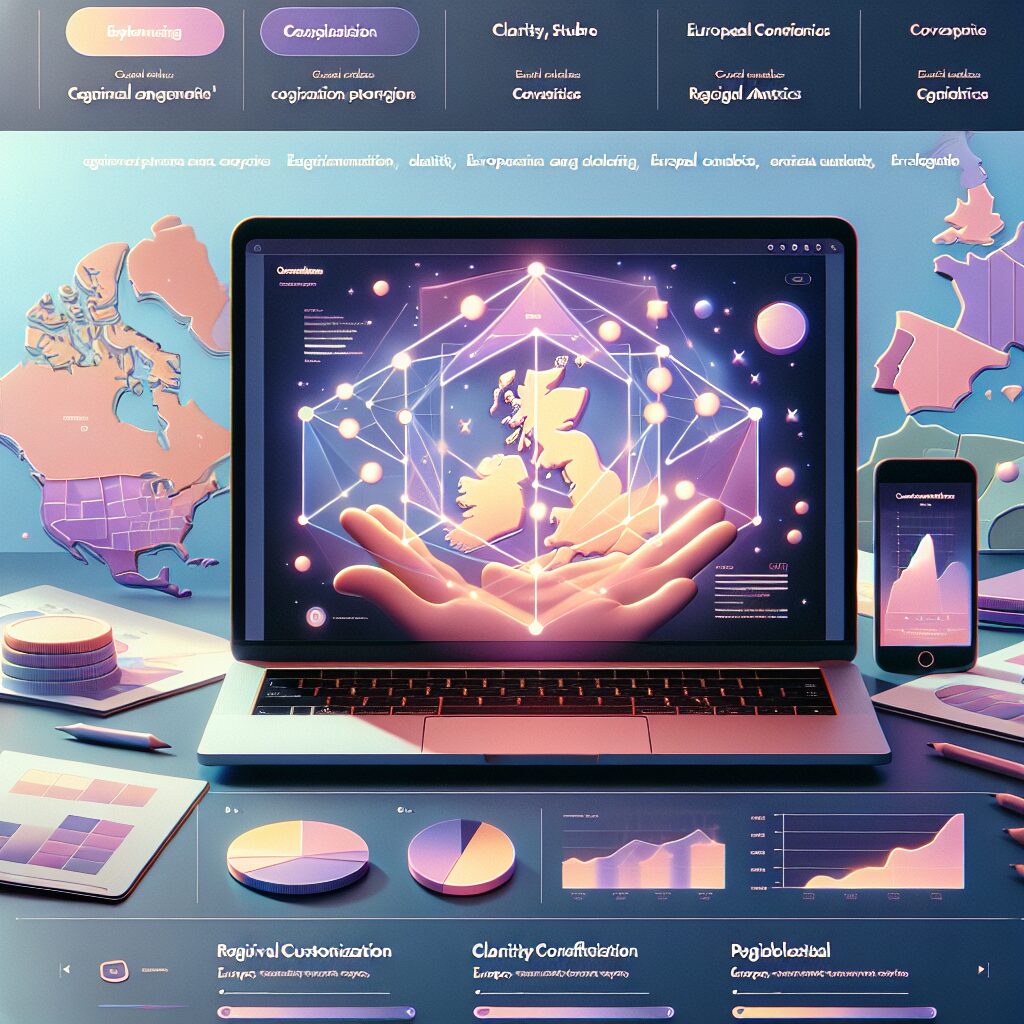About eldris
Clone.Eldris.ai empowers brands to instantly replicate and translate their websites for seamless global expansion. Our automated system delivers SEO-friendly, multilingual clones that launch in days, not months.
In This Article
- Use native-level translations, not automated scripts, to ensure authenticity.
- Match visuals with regional expectations and cultural values.
- Display correct currencies, tax regulations, and measurement units.
- Optimise product pages with local SEO strategies and hreflang tagging.
- Adapt payment and delivery systems to regional preferences.
- Encourage country-specific reviews and embed them accordingly.
- Target top-performing EU languages based on real user data.
- Scale localisation with AI while incorporating human validation.
- Avoid copy-paste localisation across markets—customisation yields trust.
- Review compliance with local laws and product standards regularly.
Why Localisation Matters for EU Product Pages
Understanding Cultural Expectations
When businesses localise product pages, they’re not merely translating content—they’re aligning their offerings with regional expectations and buyer behaviours across European markets. Each country in the EU presents its own set of cultural preferences, idiomatic expressions, taboos, and purchasing norms. For instance, a design element or colour scheme that resonates with customers in Italy might be ineffective or even off-putting to an audience in Sweden.
Ignoring such differences can lead to a disconnect between your brand and potential customers. On the other hand, effective localisation can significantly enhance trust, relevance, and user engagement. Whether it’s the choice of models in imagery or the tone of product descriptions, reflecting local norms ensures that product pages speak directly to the target buyer.

The Importance of Native Language Translation
Trust and Clarity Through Native Communication
Localisation begins with accurate and context-aware translation. Shoppers are far more likely to convert on a site that speaks their native language. In fact, studies consistently show that consumers prefer purchasing from websites where content is fully localised, including customer support and transactional communications.
Relying on automated translation tools alone, without review by native speakers, often results in awkward phrasing or even misleading information. Precision matters particularly for product specifications, usage instructions, and legal disclaimers. When you correctly localise product pages through fluent, native communication, you create a sense of credibility. This leads to trust and, ultimately, a higher likelihood of purchase.
“Language is the currency of trust in international e-commerce.”
Adapting Visuals and Layout for Cultural Relevance
Visual storytelling is a potent component of e-commerce. However, preferences around images, design, and layout can vary significantly between European regions. A layout considered clean and minimalistic in the Netherlands may come across as sterile in Spain.
Similarly, model diversity, wardrobe choices, and even product photography styles must reflect regional expectations. For example, using seasonal props like snow-covered scenes in winter campaigns must align with local climates—what works in Finland may confuse audiences in Portugal. Localising the visual hierarchy of a page also ensures that key information, such as pricing or shipping details, aligns with reading patterns, which differ across cultures.
Customising Measurement Units, Prices, and Currencies
Nothing erodes user confidence faster than unfamiliar units or confusing pricing. To successfully localise product pages, businesses must convert product dimensions, weights, and volumes into locally accepted units. For example, using centimetres and kilograms in Germany or litres in France is not optional—it’s essential.
Monetary localisation goes beyond simply converting currencies. Prices should reflect local tax structures, VAT, and even psychological pricing strategies familiar in the region. A product listed at €19.99 might appeal differently to shoppers in Belgium compared to those in Hungary. Moreover, displaying the wrong currency or tax format can confuse your audience and lead to cart abandonment.
Optimising Local SEO Across European Regions
To increase online visibility and drive traffic organically, optimising local SEO is paramount. Each European country has nuanced differences in search behaviours and relevant keywords. By conducting thorough region-specific keyword research, businesses can identify terms that local consumers are actually using.
This extends to meta descriptions, URL slugs, and alt text on images. A mistake often made is leaving URL structures in English, even when the content has been translated. Optimised product pages must feature localised keyword targets that adhere to SEO best practices native to each region. Implementing hreflang tags also ensures Google serves the correct language versions to the appropriate audience.
Moreover, Learn more about Multilingual E-commerce Localisation Strategies helps integrate your product pages into a broader content ecosystem optimised for European user journeys. Structuring this internal mesh enhances relevance and authority within specific niches or categories.
Highlighting Region-Specific Payment and Delivery Options
European consumers are highly specific about how they pay and receive products. Preferred payment methods vary widely—Germans often favour direct debit or invoice payments, while Dutch customers lean toward iDEAL, and Spanish shoppers frequently use credit cards. If your checkout experience doesn’t accommodate guests’ preferred payment methods, you’re likely missing out on significant conversions.
In addition to payments, local delivery logistics also require attention. Expected delivery times, costs, and even preferred couriers differ. Clear information about local shipping policies builds transparency. Offering in-region return centres or prepaid return labels can be a game-changer for shopper trust. Aligning these logistics with local norms reinforces the impact of your product pages and boosts overall satisfaction post-purchase.
Managing Localised Product Reviews and Testimonials
User-generated content plays an integral role in converting browsers into buyers. Reviews written in a consumer’s native language add social proof that feels relevant and relatable. If you localise product pages but overlook the importance of region-specific testimonials, you may appear disconnected from genuine user experiences.
Encourage local reviews by setting up country-specific domains or vernacular prompts post-purchase. Displaying French reviews for French users and Italian testimonials for Italian shoppers contextualises the shopping experience. Consumers are more likely to trust reviews that mirror their own concerns, cultural references, and terminology.
Additionally, Read a related article enhances the structure for review aggregation and localisation workflows, connecting product insights with real-time regional feedback.
Choosing the Right EU Languages for Your Business
The European Union houses 24 official languages, but only a few may be directly relevant to your target demographic. Start by analysing your site traffic and conversion data to identify where your users are located. Based on this, select the most impactful languages to prioritise.
French, German, Spanish, Italian, Polish, and Dutch are commonly selected for localisation efforts. However, emerging markets such as Romania or the Czech Republic may offer untapped potential. The key is pragmatic prioritisation: begin with your strongest demand centres and expand strategically as you gain traction. Localising every single EU language indiscriminately can strain resources and dilute focus.
Using AI Tools for Scalable Localisation
Modern AI tools have revolutionised the process of localisation. Natural language processing algorithms now provide contextually accurate translations at scale. But the real power lies not just in linguistics—it’s in automated layout adjustments, image substitutions, and UX modifications based on regional data sets.
Businesses can now deploy AI to pre-optimise content for different EU markets, then layer on human review for critical accuracy. This hybrid model drastically reduces time to market while maintaining high standards of cultural alignment. Additionally, AI can track engagement metrics across localised pages, allowing continual improvement and iteration.
For trusted AI solutions that support content refinement and translation, consider exploring Best practices for global product page translation for proven multilingual commerce platforms compatible with European labour and privacy laws.
Common Mistakes to Avoid When Localising Product Pages
Despite good intentions, many brands fall into common traps when trying to localise product pages. One frequent mistake is relying solely on automated translation with no native oversight. This can result in inaccuracies, cultural misunderstandings, and even offence.
Another oversight is assuming a one-size-fits-all visual design will appeal to all European markets. Avoiding tailored layouts and colours can lead to branding that misses its mark. Failing to update legal and shipping information per country regulations is another dangerous error that can lead to compliance issues or abandoned carts.
Last but not least, ignoring local SEO frameworks stunts visibility. Without adapting metadata and links to regional search engines and user intent, even well-crafted pages may never reach target audiences.
Conclusion: Driving Conversions with Optimised EU Product Pages
[CONCLUSION_CONTENT]
To maximise conversion rates across European markets, companies must thoroughly localise product pages. This includes native language content, cultural visuals, adapted pricing, regional testimonials, payment options, and optimised SEO. A meticulous localisation strategy ensures your product pages resonate with diverse audiences and invite trust and action.
Great guide on localise-product-pages-european-conversions – Community Feedback
What steps are crucial for localising product pages in Europe?
Key steps include translating content professionally, adapting visuals and measurements, ensuring local SEO, and building trust with region-specific reviews and payment options.
How does localisation improve product page conversions?
Localisation builds trust with shoppers, ensures relevance, removes language barriers, and tailors the user experience, all leading to higher conversion rates across specific markets.
Which languages should I prioritise when selling in Europe?
Focus on the top European e-commerce languages such as German, French, Spanish, Italian, Dutch, and Polish, based on your target regions and potential sales volume.










